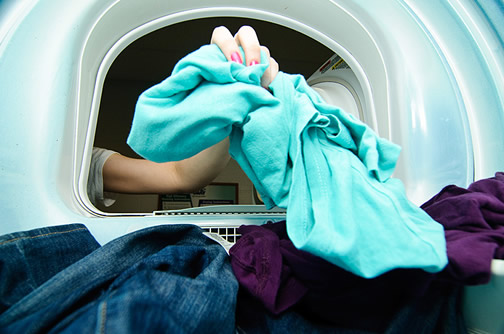On August 29th, 2016 Washio service has ended it's existence.
Lets see why this is so important not only to it's investors and people who used their service, but just about to every person in the new world.
Lets start it with simple question who or what this Washio is and why should i care?
Washio started it's existence in 2013 by Jordan Metzner and Juan Dulanto as one of the first laundry services on demand, it originated on the west coast and declared to be the first ultimate Uber for laundry.
Washio model was simple, they contracted drivers on hire and paid per delivery, found the best laundromats and cleaners in the area, worked the wholesale deal with them for usually half the price of a drop off.
Contracted drivers pickup laundry, drop it off at the laundromat, laundromat washes garment and drivers drop it off at the customer's location per request and get paid.
Washio charged a hefty price for it's services, $1.6-$2.15 per lb and $9/$8 per pants/blouse (which is 3x-x4 the cost of wholesale), on top of that they charged delivery fee of $6.
Despite extra high prices, Washio had a fast growing customer's base.
It attracted alot of attention, especially when celebrity/actor Ashton Kutcher invested among other angels and venture capitalists a total funding summ of over $16M.
At that point almost nobody had a doubt that Washio is on the way to a big bright future.
Remember that Washio didn't own any cleaning or laundry facilities, didn't employ their drivers, and didn't even own delivery vehicles.
Virtually their expenses would be customer support people, app developers and their managers.
Washio started expanding to other cities, San Francisco, Los Angeles, Chicago, Boston, Washington D.C. and Oakland. and maintained an average 3.5 stars reputation on Yelp throughout all cities.
Let's summarize everything: Low Expenses, 3x - 4x margin + delivery fee's, contracted drivers that only get paid when pickup/delivery requested. So what could possibly go wrong.

Complications:
Unfortunately Washio business model has many flaws.
1. Drivers are interested only when there are constant jobs for pickup and delivery. Customer's only order when there are drivers always available to pickup. With Uber it's simple, it has thousands of drivers that circle around the city, and customers know they can always find an Uber driver, with Washio it's a challenge to keep good drivers within the service and provide them with the steady jobs.
2. High price, means having less customers, means less orders, means less jobs for drivers. No drivers, no orders, no income. How many people do you know that will pay triple cost of doing laundry a few blocks away?
3. Quality control, having many washing and dry cleaning facilities to outsource making it hard to control the quality and timing. If something happens with wash/dry cleaning, or things get misplaced, it's almost impossible to locate things or correct bad things before they happen.
4. Refunds, returns, claims. When mistakes happen, and they happen alot in big outsourced operations, customer's request compensation, and in most of the time they expect compensation to be of 100% of garment value, marker value and not discounted value they bought an item for, and not used garment value of 40% or less, and Washio has to obey, to maintain the highest reputation and satisfaction.
5. Silicone valley startup model. Perhaps the most important part, Washio got funded as an Uber model startup, startup that is considered trustworthy and stable if it's structured accordingly It should have CEO, COO, CFO and of course CTO. Customer Service Director Looks over the Customer Service Manager that manage dozen of other people. Since it's a tech startup, it will have Tech Department with half a dozen managers who manage Senior, Mid and Junior Developers, Designers, and Testers. Marketing Department, Human Resources Department etc.
Over 75% of full time jobs that have no impact on service at all. And with every additional city added to it's belt, army of employed professionals would grow bigger. Now imagine, each of these employees are not minimum wage workers from McDonalds, but high paid workers, designers, developers, managers, and they get paid accordingly $60k-$150k. If you would average each employee at over $90k yearly and count 50 employees or more, that will dry Washio budget by almost $5M yearly. That's not including advertisement that Washio would have to do religiously, to keep finding new customers who can afford paying triple cost for the service that let's you order by using app instead of calling your closest cleaners to ask for a pickup, and it may still be the cleaners that Washio outsources it to anyway.
And Washio was not the only one startup in cleaning market on demand that went belly up, Prim went down in 2014. Laundry Puppy went down the same year. HomeJoy home cleaning startup backed by over $45M went down last year. Boomerang Laundry, HangrLane Etc... All these startups of cleaning/laundry on demand went down within last few years.
Wait, STOP! How does anything to do with me you would say.
If you ever thought of wearing clothing, it would need to be washed or dry cleaned. You would either bring it to local cleaner around the corner or use app on demand. Washio was the biggest and the most well known, the best funded, the most expended and the most promising laundry startup in laundry industry. It was going to revolutionize the laundry market like never before. It would end the era of mom and pop shops for good. Maybe not so dramatically, but if it worked out, other services on demand would flood the market.
Perhaps laundry market needs a different approach. We at Liox hope we are on the right path to be the company that will change the way you do laundry forever. And maybe after startups like Washio fail, investors will look towards other more promising startups, like us.
The End




